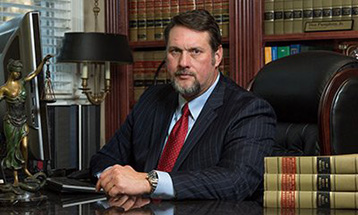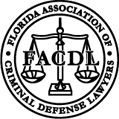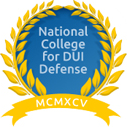- DUI
- Criminal Defense
- Florida DUI
- Traffic Offenses
- Drug Charges
- Marijuana Charges
- Violent Crimes
- Domestic Violence
- Temporary Injunctions
- Weapons Charges
- Theft Crimes
- White Collar Crime
- Juvenile Offenses
- Sex Crimes
- Violation of Probation
- Early Termination of Probation
- Seal or Expunge Criminal Record
- Criminal Appeals
- US Federal Offenses
- Misdemeanor Charges
- Felony Charges
- Co-Defendant Cases
- College Student Defense
- College Student Hearings
- FSU Students
- FAMU Students
- Florida Panhandle Arrests
- Extradition to Florida
- Bench Warrants / Warrants
- Emergency Bond Hearings
- Gambling Charges
- Drone Arrests
- Marsy’s Law
- UAS Infractions
- Introduction of Contraband
- Lying to Police
- Locations
- Case Results
- Our Firm
- Media
- Resources
- Blog
- Contact Us
Death Row Inmate’s Appeal Rejected in Murder Case of FSU Student
October 5, 2022 Don Pumphrey, Jr. Criminal Defense, Violent Crimes Social Share
The Supreme Court rejected a Death Row Inmate’s appeal of the 2010 murder of an FSU graduate student whose body was discovered in St. Johns County. The murder was the final crime in a spree by three inmates who escaped from a Louisiana prison.
We will cover the details of the crime spree, the initial sentencing, and the appeal that was just recently rejected by the Supreme Court.
What was the Case?
In 2010, three men escaped from a Louisiana prison and went on a crime spree that spanned several states and ended with the death of a Florida State University student. Quentin Marcus Truehill, along with Kentrell Johnson and Peter Hughes, managed to steal a black truck after the prison escape, which led to the first of several crimes.
The three men stopped in a parking lot in Broussard, Louisiana where they approached LeAnn Williams and stole her bag with her wallet and credit cards. The three inmates made it across the Florida border and stopped in Pensacola, where they went to an apartment complex and attacked Brenda Jo Brown. According to her statement, Brown was threatened with a knife and suffered an amputation of five fingers.
The inmates drove to Tallahassee next, where they found Mario Rios in a parking lot. Truehill threatened the victim with a large knife. Rios managed to escape and later provided police with the t-shirt for DNA evidence. A short distance away they found Cris Pavlish, who they also threatened with a knife and stole their purse.
The last victim they confronted on the crime spree was Vincent Binder, an FSU grad student who was walking home from a study session. The three inmates kidnapped and brutally murdered Binder, leaving his decomposed body in an empty field in St. Augustine.
According to the report, Binder’s hat was found twenty-five feet away from his body. The victim had multiple stab wounds in his back and blunt-force injuries to his left head area that entered into the cranium. Multiple chopping-style injuries at the back of Binder’s head resulted in fractures and a four-inch hole in the back of his head.
In addition, Binder also had broken ribs, a fracture in his left forearm, and a dislocated radius, which all indicate defensive injuries. The authorities had medical examiner Dr. Frederick Hobin view the victim and opined that there were two knives used to kill the victim.
The three escaped inmates made it all the way down south into Miami when they finally got caught. Once arrested, police found the rest of the evidence in the group’s hotel room. Included in the evidence found was Binder’s wallet, a trash bag filled with clothes, a metal handsaw, a machete, a black knife sheath, and two pairs of jeans that were all submitted for DNA testing.
When police found the stolen black truck, more evidence was uncovered. The evidence included a bloody knife under the passenger seat, William’s identification card, ATM receipts, personal documents from Pavlish, and a green washcloth soaked in blood. DNA testing showed the blood matched Binder, and a mixed DNA profile was consistent with Binder and Johnson.
Truehill and the two accomplices were arrested and charged with first-degree murder of Binder.
Sentencing
During the trial, the State called upon the other victims from the crime spree to testify against the defendants. Williams, Brown, Rios, and Pavlish all spoke about their encounters with the escaped inmates. Suzanne Livingston, an FDLE analyst who tested the DNA samples, was also called up to the stand.
Truehill requested an acquittal, which was denied. The jury found Truehill guilty of first-degree murder and kidnapping of Binder. The jury’s job in capital cases does not end when the defendant is found guilty. The jury must again make a decision in the penalty phase if the defendant should receive the death penalty. The jury can consider any aggravating factors that the State presents and any mitigating circumstances that the defense presents. During the penalty phase, the state addressed several aggravating factors. One of the aggravating factors included Truehill’s prior conviction for a violent felony, for which he was already serving a thirty-year sentence when he escaped from the Louisiana prison.
When the death penalty phase finished in 2014, the jury unanimously recommended that Truehill receive the death penalty. The trial court found six aggravating factors and five mitigating circumstances. The court found that the aggravating factors outweighed the mitigating circumstances and sentenced Truehill to death.
Appeal Overturned
Truehill filed a postconviction appeal which raised six issues for review. The following are issues Truehill addressed in the filed appeal:
- The trial court erred in overruling Truehills objection to a peremptory challenge to an African-American juror.
- The exclusion of potential jurors due to their age violates the constitution.
- The trial court erred in permitting the state to introduce evidence of uncharged crimes.
- The cumulative effect of the prosecutor’s improper closing comments during opening and closing statements.
- The trial court’s ruling during the penalty phase deprived him of a fair trial.
- Florida’s death sentencing scheme is unconstitutional.
Due to the nature of the claims that Truehill raised, the Supreme Court examined the effectiveness of Truehill’s trial and appellate counsel. The court found that the trial counsel’s decisions during the trial were a reasonable trial strategy. For example, Truehill argued that the defense counsel’s failure to object to the prosecutor’s comments during closing arose to ineffective assistance of counsel. In closing statements, the prosecutor described Truehill as a “hatchet man.” The court found that the comment was not a mischaracterization of the evidence presented during the trial, and thus the trial counsel was not ineffective for not objecting to the comment.
Another main claim in Truehill’s appeal is that his attorney was ineffective in handling the DNA evidence. One of the arguments that Truehill made in support of his claim was that the trial counsel failed to object to portions of the state’s DNA expert testimony. However, the Supreme Court rejected Truehill’s argument for an appeal. The court wrote: “In sum, there is overwhelming evidence linking Truehill to the murder and kidnapping of Binder. Based on this record, we find that there is no reasonable probability that the jury’s verdict of guilt would have been different even if the challenged DNA evidence were wholly excluded.”
Finding a Defense Attorney in Tallahassee, Florida
Getting accused of a violent crime is taken very seriously in Florida. Getting convicted of a violent crime can result in expensive fines, extensive prison sentences, or in the most extreme cases—the death penalty. Working with an experienced criminal defense attorney in Tallahassee is the best option to build a strong defense for your case. Don Pumphrey and his team at Pumphrey Law Firm have experience representing clients across the state for various criminal charges. Call us today for a free consultation at (850) 681-7777 or leave us an online message on our website.










